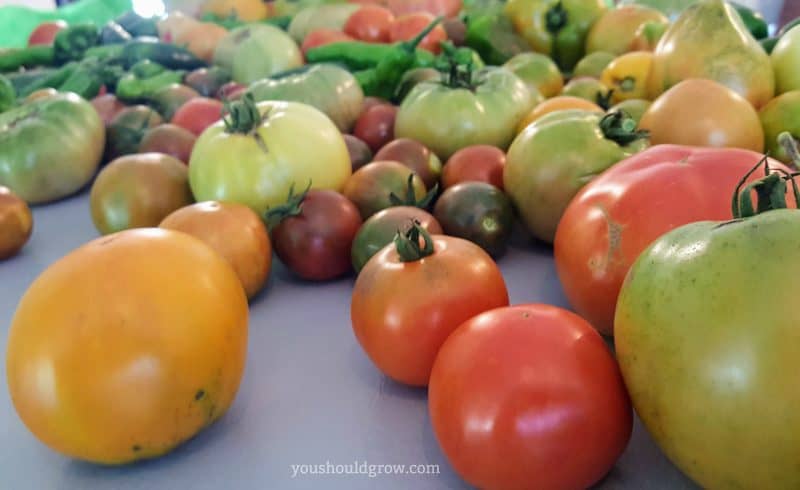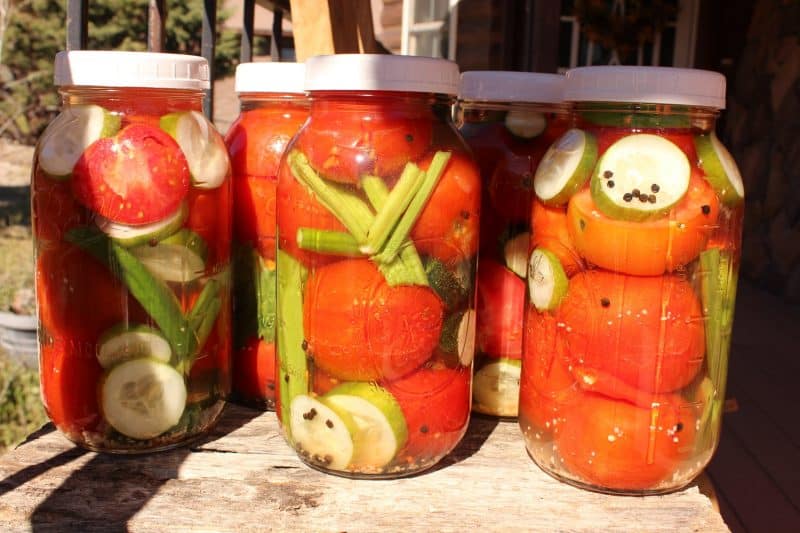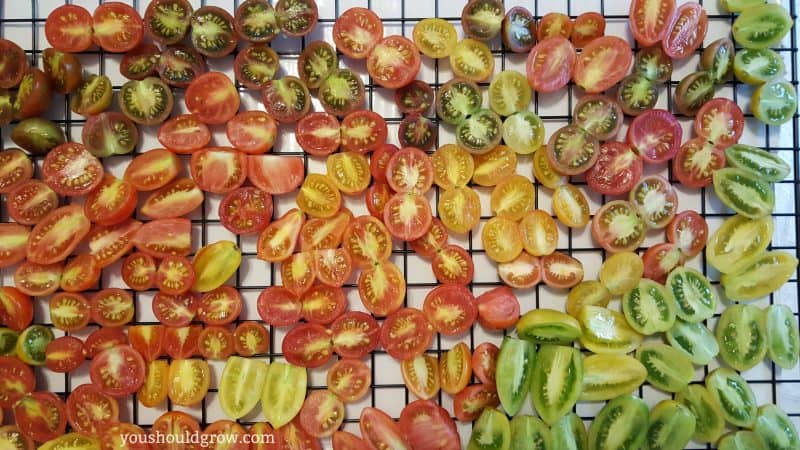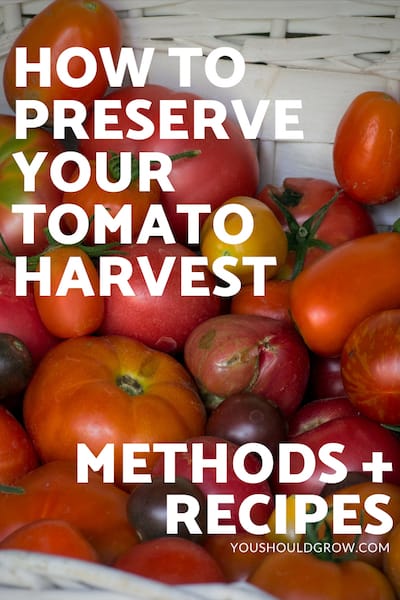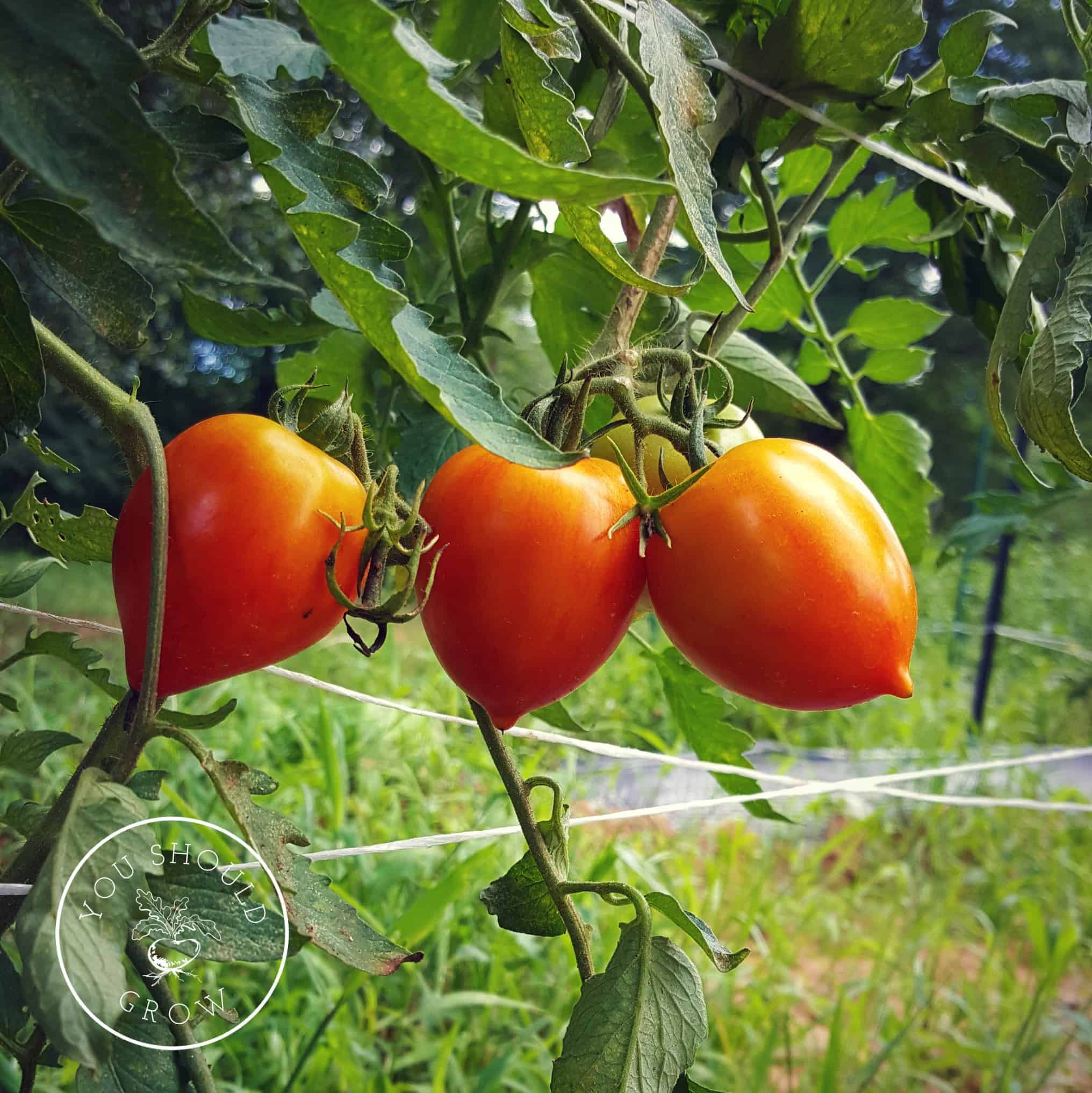How To Preserve Tomatoes
As an Amazon Associate and member of other affiliate programs, I earn from qualifying purchases.
Summer is the season of tomatoes! But the abundance of fruit won’t last long. Take advantage of the harvest all year long by learning how to preserve tomatoes.
Tomatoes are the most popular vegetable grown by home gardeners. And often, during the peak of the season, a gardener’s kitchen counter will be covered with pounds upon pounds of ripe tomatoes!
What to do with so many tomatoes that are ready to eat?
Tomatoes are surprisingly versatile when it comes to using them in the kitchen. Fresh chopped tomatoes are a tasty addition to any pasta dish or salad.
Roast your tomatoes in the oven with fresh green beans, a little olive oil, garlic, salt and pepper for a yummy side dish. Or cook them down on the stove top to make a delicious tomato sauce.
Whether preserved or fresh, tomatoes form the base for many soups, sauces, and condiments.
More good news? They’re really easy to preserve in the freezer and can be canned, fermented, and dehydrated. Read on to learn how to preserve tomatoes with each of these methods.
Do not be intimidated by a ton of tomatoes!
Rejoice! Seriously! Because you can do so many things with your garden fresh tomatoes.
When you first bring your tomatoes in from the garden, make sure you store them correctly. You don’t want them to spoil before you can get to using them.
Tips for storing fresh tomatoes
First and foremost, never ever put your fresh tomatoes in the refrigerator. Tomatoes will turn mushy and lose their flavor if kept in the refrigerator.
Keep them stem side down in a single layer at room temperature-we leave ours on the kitchen counter. They should keep in this way for a few days.
You’ll want to keep an eye on them to make sure they’re not getting over ripe or rotten spots. When you’re ready to preserve your tomatoes, you can do so with one of the following techniques.
How to preserve tomatoes in the freezer
The simplest and quickest way to preserve your tomatoes is by simply freezing them. Until recently, I had no idea that you could do this, but it’s a game changer!
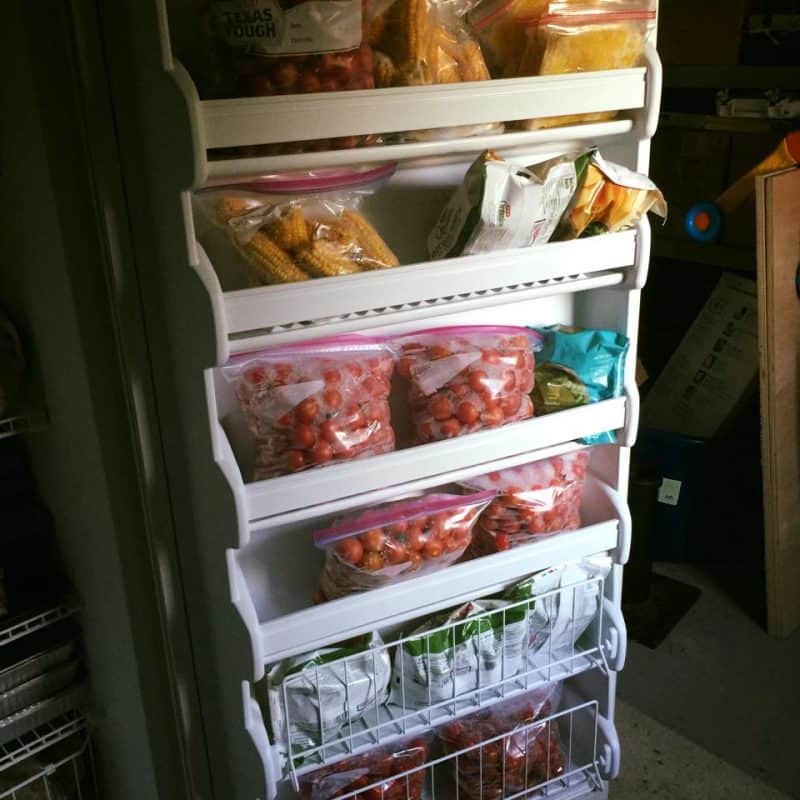
I first learned this trick from the folks over at NorthernHomestead.com where they walk you through the process of freezing whole tomatoes.
It’s really the simplest thing to do and takes a lot of the pressure off of you during the busy summer months.
If you have some extra time, how about making some stewed tomatoes for your freezer?
My friend Amy shows you how she goes about making and freezing stewed tomatoes in small batches, and she even tells you how to follow up with canning your stewed tomatoes.
Frozen whole or stewed tomatoes can be used to make fresh tomato sauce or soup whenever you’re ready. Fresh tomato soup in the winter? Yes, please.
You can also freeze your tomato sauce or paste in jars or freezer bags. Just make sure you leave plenty of space for your sauce to expand when it’s frozen.
How to preserve tomatoes by canning
There are many options for canning tomatoes: whole, chopped, sauced, or paste.
Getting your tomatoes prepared for canning completely depends on how you plan to can them and your personal preference.
Most home canners recommend peeling your tomatoes first, but you do not need to do this step.
You can also choose to run your sauce through a food mill, strainer, or blend it all up with an immersion blender (my favorite) or food processor.
There are two easy ways to peel your tomatoes: freeze them first, then peel them when they thaw or blanch them in boiling water for 1 minute then plunge into ice water.
In both cases, the peel slides right off the fruit. Easy peasy.
Personally, I don’t mind the seeds and skins in my sauce. But if you want to remove them before making your sauce, here’s a good tutorial for preparing your tomatoes for canning.
If you remove the seeds before you can, don’t waste them! Follow this guide for saving tomato seeds for next season.
When it comes to canning anything, you can’t beat the information at SimplyCanning.com. Sharon really knows her stuff!
She has a lot of great, free info about canning tomatoes specifically, and I really loved her tip for shortening the time it takes to cook down your sauce.
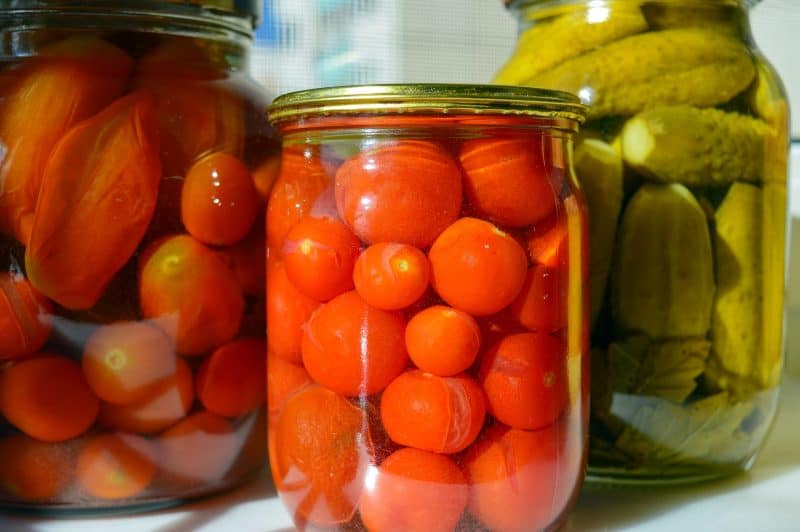
Some quick tips for canning tomatoes:
Don’t forget to add some lemon juice or citric acid to your jars. Tomatoes are not acidic enough on their own to be safely canned.
Tomatoes are mostly water so don’t be surprised to see the water separate and rise to the top when the jars are in storage.
When canning whole tomatoes, gently press your tomatoes into the jar and make sure the juices fill the space around the tomatoes. A wooden vegetable packer makes this step simple and quick.
Not sure you have what you need to start canning? Check out my list of essential canning supplies.
Canning tomatoes recipes
How To Make And Can Tomato Sauce
How to make salsa (say it like Seinfeld. Salsa!)
Black bean and corn salsa (yum!)
How to preserve your tomatoes by fermenting
Fermenting your harvest is an excellent way to add probiotics to your diet, preserve your produce without the time or mess involved with canning, and doesn’t require any expensive equipment.
The process of fermenting allows the bacteria naturally present on the produce to break down the sugars and starches so that the food is easier to digest and full of healthy, gut friendly bacteria.
To make your own fermented tomatoes, you just need the right set of tools (I have this set that came in the July Homestead Box), some mason jars, and a bit of patience.
Fermented tomato recipes
How to preserve tomatoes by dehydrating
Dehydrating your vegetable harvest is a great way to add variety to your food storage. Dehydrated foods, when properly stored, will last for several years.
Fully dehydrated (crispy) tomatoes can be stored in a cool dark place in a vacuum sealed bag at room temperature. Before putting into long term storage, check the bags for moisture which can lead to mold.
If they’re not completely dry, keep them in a bag or jar in your freezer until you’re ready to use them.
You may also choose to dip your dried tomatoes in vinegar and store them in a jar of olive oil. Read this article about the safety of storing your tomatoes in oil first.
You can use dehydrated tomatoes as vegetable chips, add them to homemade pizza, grind them into powder, or rehydrate them to add intense flavor to your favorite recipes.
You don’t need expensive equipment to dehydrate your tomato harvest. You can even dehydrate your tomatoes in your oven, but if you plan to dehydrate a lot of food from your garden, you might choose to invest in a dehydrator.
The cost of a dehydrator can run from $40 to $300 or more depending on the type and size you want to purchase. We have a commercial dehydrator like this one.
Dehydrated tomato recipes
Make tomato powder from dehydrated tomatoes
How to rehydrate sun dried tomatoes
Sun-dried tomatoes in the oven
More about preserving tomatoes
Get the most from your tomato harvest
Preserving the summer harvest: canning, drying, freezing


